“Can I ask a question? It’s not about this session, tough.” This is how many conversations start for me at early childhood education conferences and when I give training to preschool teachers. While grabbing coffee or in the lunch lineup. The number one thing teachers want to ask me about is this: How to handle a disruptive child during circle time. My answer is never the same, but my first question is; “Can you tell me about your circle time routine?” Then we problem-solve that before we ever talk about the individual child.
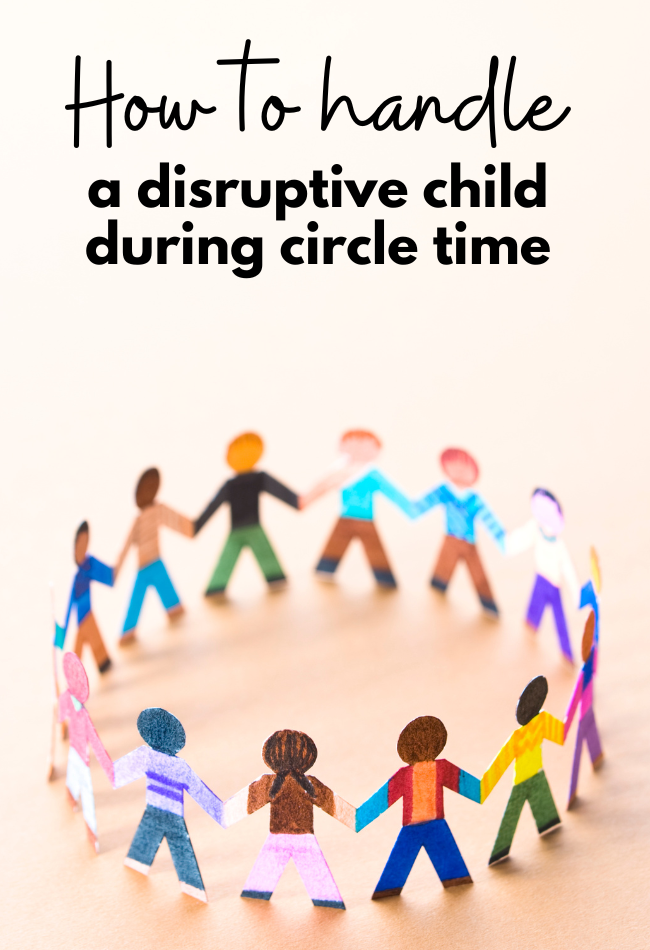
Use Circle Time Routines That Work
I can’t give you a perfect circle time routine because I don’t know your students. You are the expert about your class, you know who they are, and you know what they can and can’t do. This is why scripted curricula or inflexible routines and schedules are so ludicrous and don’t work because children aren’t predictable robots that you can program. They are autonomous humans with needs that must be met before we can expect them to have the skills and ability, not to mention the desire to participate in group activities like circle time. However, here are some tips for you to think about while creating your circle time routine:
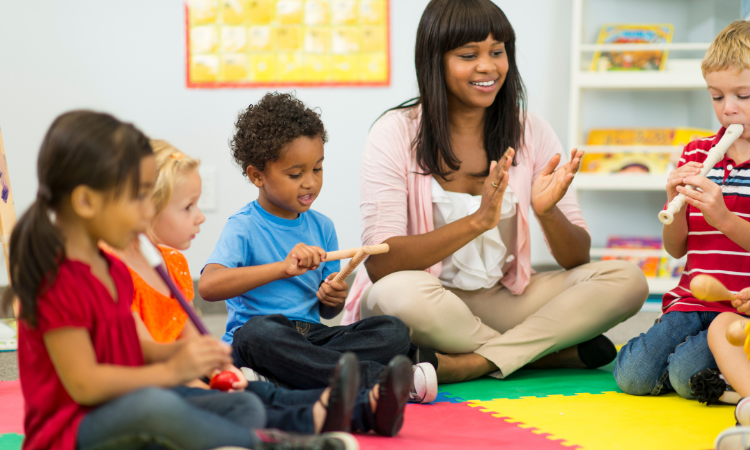
1. Have a predictable routine with novel elements. Children like to know what to expect. It’s not boring; it’s comforting. The security of a routine is helpful for behavior and learning. I use the same good morning song, same chant, same mystery number activity, and question of the day every morning circle.
2. Make it interactive. Learning is not about just receiving information; it should be about applying it too. In early childhood education, that means exploring ideas or concepts in different ways using movement, oral language, and more. Use activities like chants, questions of the day, action songs and finger plays, and dance.
3. Make it relevant and meaningful by including your students in the lessons. This means using their names, photos, asking for their opinions with question of the day, and doing polls! A simple ‘What do you think?” is a powerful way to let children know their voice matters and have them buy into group time.
4. Keep it short and developmentally appropriate. A short meaningful group time is much more important than a long conflict-laden one. If you spend the whole circle time correcting a student, no one is learning anything. Use activities that are simple and at the right level for your students. My book Everyday Preschool is packed with ideas!
5. Have perspective. What are we really trying to teach at circle time? For me, the A goal is always how to act as part of a group, how to advocate for our voices to be heard in appropriate ways, how to have the confidence to contribute to a group, and how to be respectful of others. The B goal is usually the topic lesson; maybe learn that letters come in two sizes, clouds make rain, or that you can put two squares together to make a rectangle… whatever concept or topic we are exploring. That’s never the first goal. If I stress about that, disruptive behavior will get to me, but if I see this as the place to practice and assess, see who needs more support or some peer scaffolding, I can better serve the student and likely help the situation.
How to handle a disruptive child during circle time in the moment
Ok, so your routine is predictable, your students have a chance to engage mentally and physically during circle time, and it’s not too long… but that child is still disruptive. What do you do now? That’s going to depend on the child, the amount of support you have from other adults, and your physical space, but here are some tips.
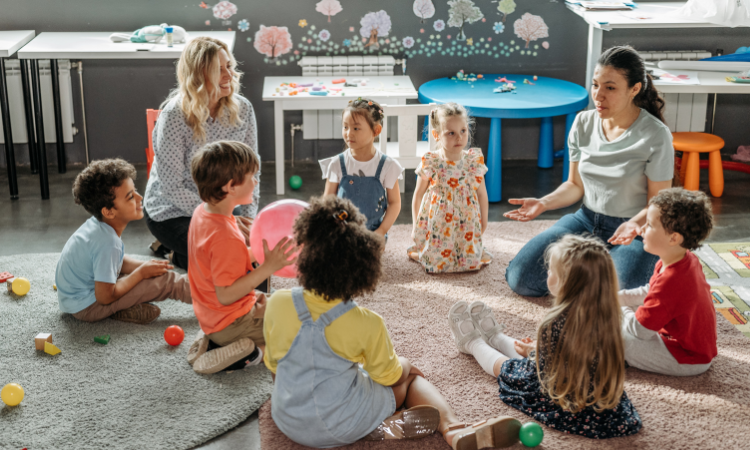
1. Stay calm. Above all else do not slip into the midset that the child is manipulating you. The child is trying to get thier needs met. That might be a need to move, to be more stimulated or something else. What they aren’t doing is trying to piss you off. This is by far the most important tip for how to handle a disruptive child during circle time.
2.Proximity. Bring the child close to you, close enough that you can quietly help them stay on track. Sometimes having a teacher physically close is all the child needs to help regulate more effectively. This only works though if you are a calming presence. If you aren’t calm find another adult who is and ask them to sit close by to provide this support.
3. Engage the child. While intentional ignoring can be very effective at times, in my experience disruptive behavior at circle will escalate if you ignore it. I ignore things like wiggling, and some side conversations, but actual disruptive behavior can often be addressed with a little engagement. Making eye contact, giving thumbs up and inviting children to be a part of the lesson isn’t rewarding bad behavior, it’s getting children back on track. ” Felix I see you are trying to chat with Christopher, can you help me with this lesson? Come see what shape you can make with these two triangles.”
4. Abandon the lesson. Get up, play the hokey pokey or simon says. It’s ok to have bad days and to regroup. If this happens often go back and re-assess your routine, it’s probably too long, and you need to make a routine that works for your group which might mean doing it at a different time of day, changing the order of the routine, or even splitting it into two shorter but more successful group times. Be creative!
Let me say this, only remove the child if it’s a must. I have only resorted to this a handful of times in decades of teaching, and it has always been because of violence. If a child gets violent you must remove them from the area where they could potentially harm your other students. Remember the A goal? To learn how to effectively work in a group? If we remove kids for minor disruptions we aren’t going to ever meet this goal. Try your best to deal with disruptions at circle, no one is expecting you to have a perfect class of quiet children , sitting still, and always waiting for you to call on them to speak. These are preschoolers, they are learning and we need to give them the space to learn and to be guided and taught. That won’t look perfect, but it will help us get your students to that goal.
For more information about behavior management in early childhood education check out these articles.
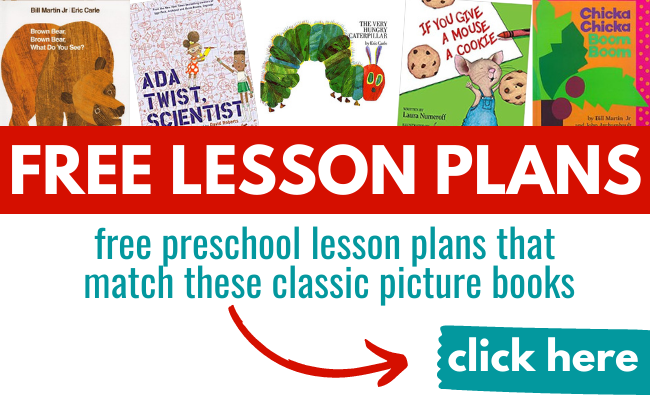
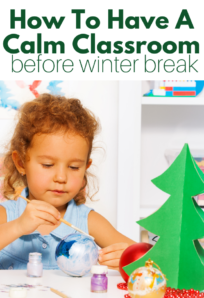
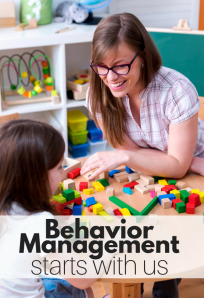
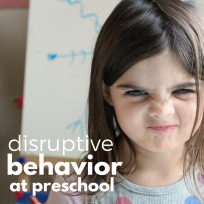
Ruthie Granger says
Thank you for this article! I have been struggling as of late with my circle time, as my classroom as grown quickly in a short period of time. I have a 3 year old Blended setting (which was originally supposed to be 7 typical developing students and 7 students identified with a disability, but my class is now up to 17 and growing). I am trying to balance the readiness of my typical developing students (whose parents are educators) with my students who have not had the experience or exposure to a structured environment. Currently, the staffing is me and my paraprofessional, so adult hands are limited, at this time and thus part of the struggle. Your article provided me with a renewed perspective…….especially #5 about perspective…..I need to go back and focus on Goal A! I can work on the other things (Goal B) in small group and provide more targeted instruction to meet the needs of each student at their development readiness level. Thank you again!!
Allison McDonald says
Ruthie,
I am so happy to help. How is it going now?